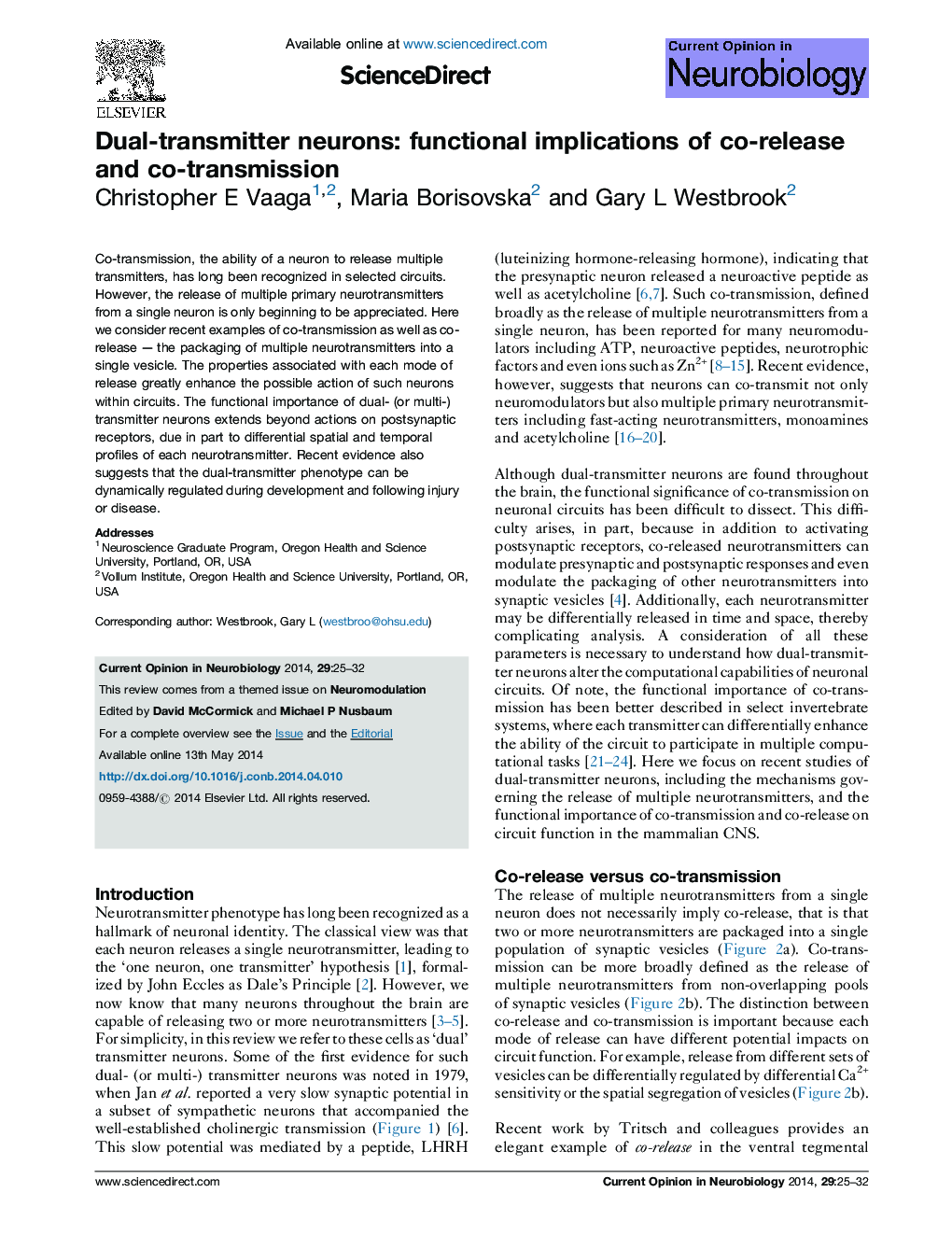| Article ID | Journal | Published Year | Pages | File Type |
|---|---|---|---|---|
| 4334191 | Current Opinion in Neurobiology | 2014 | 8 Pages |
•Co-release and co-transmission are distinct, separate modes of release.•There are multiple classes of dual-transmitter neurons.•The consequence of co-release extends beyond effects on postsynaptic receptors.•The transmitter phenotype of a neuron is plastic, in development and disease.
Co-transmission, the ability of a neuron to release multiple transmitters, has long been recognized in selected circuits. However, the release of multiple primary neurotransmitters from a single neuron is only beginning to be appreciated. Here we consider recent examples of co-transmission as well as co-release — the packaging of multiple neurotransmitters into a single vesicle. The properties associated with each mode of release greatly enhance the possible action of such neurons within circuits. The functional importance of dual- (or multi-) transmitter neurons extends beyond actions on postsynaptic receptors, due in part to differential spatial and temporal profiles of each neurotransmitter. Recent evidence also suggests that the dual-transmitter phenotype can be dynamically regulated during development and following injury or disease.
